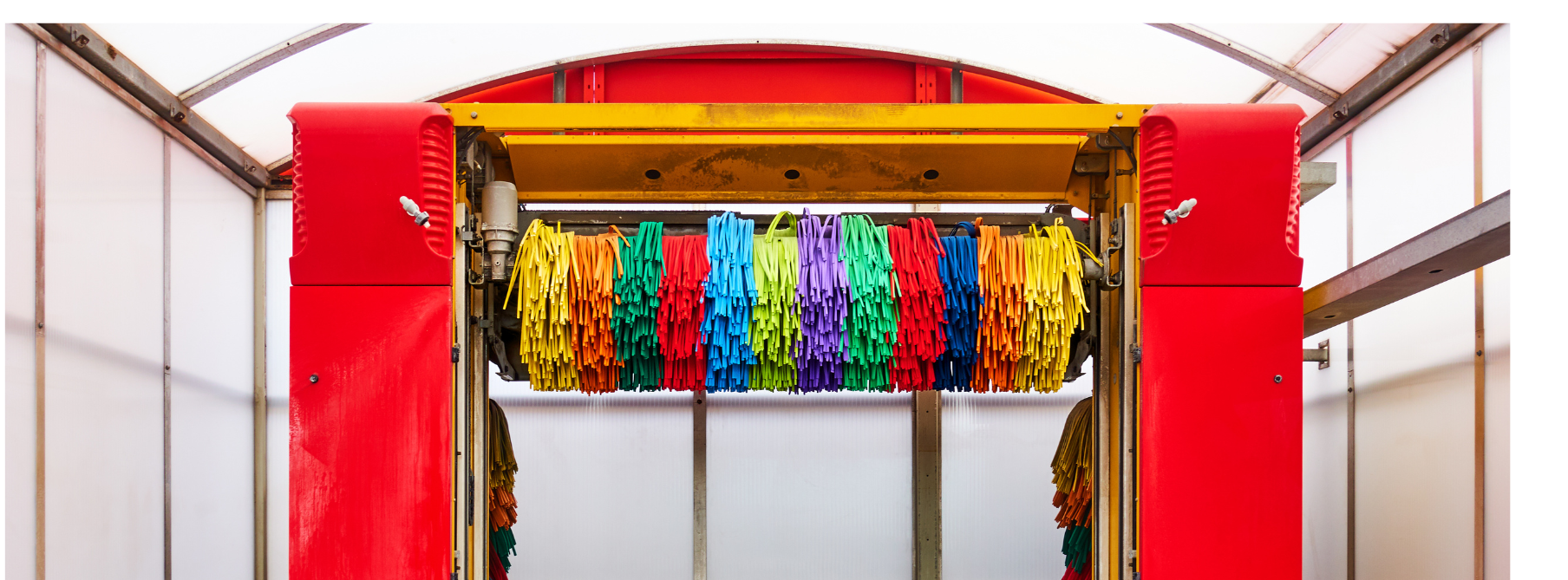Fixing Conveyor Belt Malfunctions in Automatic Car Washes
Keep Your Car Wash Running Smoothly: Detect, Diagnose, and Fix Conveyor Belt Issues Fast

In an automatic car wash, the conveyor belt is the heart of the operation. It keeps vehicles moving through each wash stage — from pre-soak to drying — in a smooth, synchronized flow. When it fails, your entire system stalls. Conveyor belt malfunctions can lead to costly downtime, frustrated customers, and lost revenue. Understanding how to detect early warning signs and fix common problems can save you thousands in repairs and prevent unnecessary disruptions.
For car wash operators, proactive maintenance isn’t just about preventing breakdowns — it’s about ensuring every customer experiences a quick, safe, and high-quality wash.
1. Common Conveyor Belt Problems in Car Washes
Automatic car washes rely on complex conveyor systems that must operate continuously under wet, soapy, and abrasive conditions. Over time, wear and tear can cause several issues:
a. Belt Misalignment
When the conveyor belt shifts from its proper track, it can cause vehicles to move unevenly or get stuck mid-wash. Misalignment often results from uneven tension or worn rollers.
b. Slippage
Slipping occurs when the belt loses traction, usually due to worn surfaces, soap buildup, or insufficient tension. This leads to inconsistent vehicle movement and slower cycle times.
c. Motor and Drive Issues
If the conveyor stops or jerks unexpectedly, the problem may lie in the drive motor or gearbox. Electrical faults, poor lubrication, or damaged bearings are often to blame.
d. Sensor and Safety Switch Malfunctions
Modern car wash conveyors are equipped with sensors and emergency stops. Dirt, corrosion, or wiring issues can cause false triggers or prevent the system from running altogether.
(Related reading: Why Preventive Maintenance Saves You Thousands in Repairs)
2. How to Diagnose Conveyor Belt Issues
Diagnosing the cause of a conveyor malfunction requires observation and systematic inspection.
- Step 1: Check Belt Alignment – Observe whether the belt drifts to one side. If so, adjust the tracking rollers to center it.
- Step 2: Inspect for Wear and Debris – Examine the belt surface for cracks, fraying, or buildup of grit and chemicals.
- Step 3: Test Motor and Tension – Listen for grinding or squealing noises, which indicate worn bearings or low lubrication. Ensure the belt tension is tight enough to prevent slippage but not overly strained.
- Step 4: Review Control System and Sensors – Ensure emergency stop switches are functional and free of corrosion. Test proximity sensors for responsiveness.
Keeping detailed maintenance logs can help identify recurring issues and schedule preventive replacements before failure occurs.
(Explore our guide: Car Wash Repairs: Keeping Your System at Peak Efficiency)
3. Effective Fixes and Maintenance Tips
a. Realign and Retension the Belt
Use manufacturer guidelines to realign the conveyor belt. Proper tension should allow minimal deflection — about half an inch — when pressed at the midpoint.
b. Clean Regularly
Debris and chemical residue accelerate belt wear. Wash the conveyor system weekly using
car wash-safe cleaning agents to prevent buildup.
(Related:
Car Wash Chemicals: The Secret to a Spotless, High-Gloss Finish)
c. Lubricate Moving Parts
Rollers, bearings, and chains require periodic lubrication. Choose lubricants compatible with wet environments to avoid contamination and corrosion.
d. Replace Worn Components
Inspect belts, rollers, and drive chains monthly. Replace them at the first sign of wear rather than waiting for complete failure.
e. Train Your Staff
Operators should know how to identify early warning signs and safely stop the conveyor if necessary. Training reduces the risk of vehicle damage and improves response time when issues arise.
4. Preventive Maintenance: The Key to Avoiding Downtime
Regular inspections and routine maintenance are the foundation of a reliable car wash system. Preventive maintenance ensures consistent performance and extends the lifespan of your conveyor components.
Schedule maintenance checks based on operating hours, not just months. For busy car washes, weekly inspections are ideal. Keep a maintenance checklist covering:
- Belt tension and alignment
- Lubrication levels
- Roller and pulley wear
- Sensor calibration
- Electrical and control box conditions
Some operators invest in predictive maintenance systems that use sensors to monitor vibration, load, and temperature. These smart systems alert you before mechanical failure occurs — a cost-effective upgrade for high-volume car wash businesses.
5. When to Call a Professional
While minor adjustments can be handled in-house, certain conveyor issues require specialized expertise. Call a technician if you notice:
- Repeated belt tracking problems
- Motor overheating or burnt smells
- Electrical faults or tripped breakers
- Excessive vibration despite maintenance
Professional service teams can perform diagnostic tests, recalibrate your system, and replace high-cost components efficiently — minimizing downtime and protecting your equipment warranty.
Conclusion
A smooth-running conveyor belt keeps your car wash business flowing — literally. By learning to recognize early warning signs, performing regular maintenance, and addressing small issues promptly, you can prevent major breakdowns that disrupt your operations and hurt your bottom line.
A well-maintained conveyor system not only improves efficiency but also enhances the customer experience. After all, reliability builds trust — and trust keeps your lanes full.
